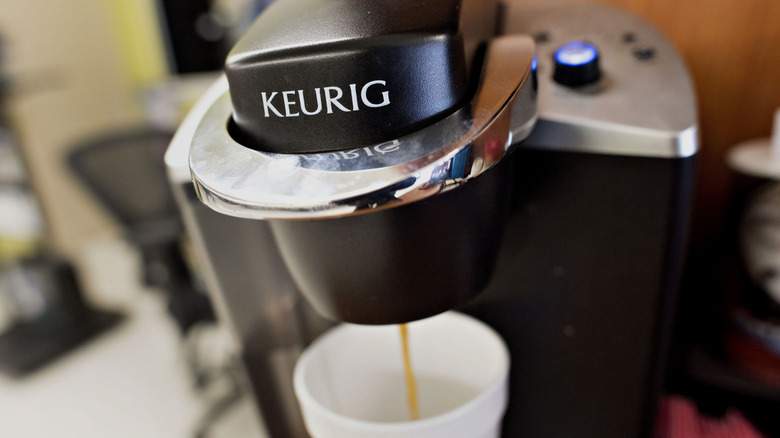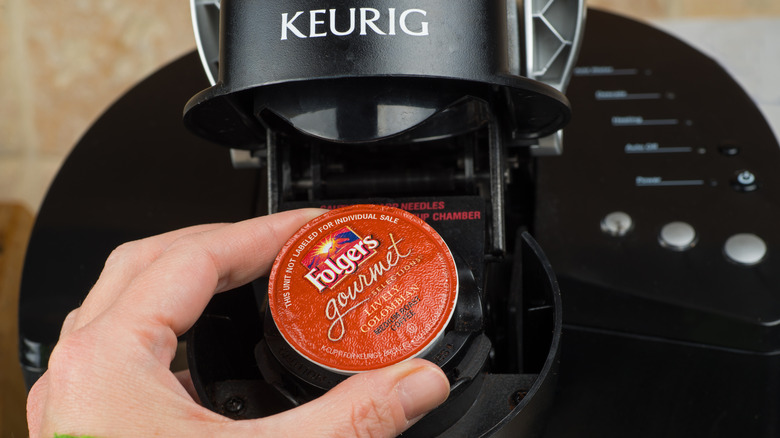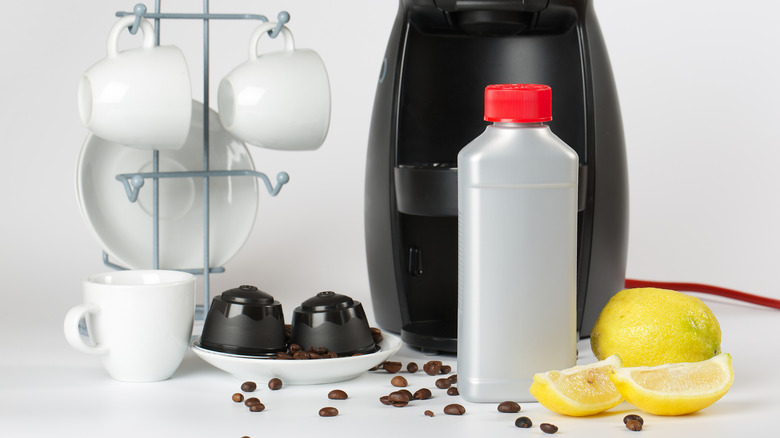How Often To Clean Your Keurig For The Best Tasting Coffee
A Keurig coffee maker is quick and convenient and needs very little besides water and capsules to work its magic, which is perhaps why most of us leave the machine for weeks, if not months, before giving it a good scrub. After all, how dirty can the coffee machine get if it's mostly just water that fuels it? Turns out, a lot.
For a Keurig to function at its best, it requires daily, weekly, and quarterly maintenance. Removable parts of a Keurig (drip trays, water tanks, and the like) should be washed, its surfaces wiped, and used pods discarded every day. The PHA or pod holder assembly and needles should be cleaned every week. And the machine should be thoroughly descaled every quarter — or every six to eight weeks if you fuel a family and get through more than eight K-cups in a day.
While this may be more cleaning than you expected, it is necessary. For one, single-serve coffee machines like a Keurig are breeding grounds for bacteria like E. coli and Streptococcus. Plus, not cleaning a Keurig regularly will also shorten its lifespan and affect the quality of the java that it brews, imparting a burnt and bitter flavor to the coffee. Not to mention, your morning cups of Joe can taste like the green tea you had before bed if the machine isn't cleaned between each use.
Daily and weekly maintenance for a Keurig
To get the most out of your Keurig, you'll need to give it a bit of care after each use. Once the machine has finished pouring out coffee and cooled down, the bare minimum is rub it down from the outside with a cloth. This will ward off any germs sitting on the surface from getting inside the machine — and your next drink.
And while you may usually wait for the pod holder to fill up before tossing the used K-cups in a bin, it's a good idea to discard the pod as soon as you finish brewing your coffee. Hand-washing drips trays with soap and water after each use will also go a long way in keeping your Keurig in top shape. The same goes for water tanks — they should be cleaned and filled with fresh water before each brew, especially because they are among the top five most germ-infested places inside your home.
Once you've used your Keurig for a week, it's time to pull out the pod holder assembly that holds K-cups and clean it with soap and water, too. Keurigs also have sharp entry and exit needles that puncture the pods and allow water to flow through — the former sits under the brewer head whereas the latter is tucked away inside the pod holder assembly. Use a paper clip to gently dislodge any stuck-on coffee grounds that could be spiking your brews with a bitter flavor.
How to descale a Keurig for a deeper clean
The exact frequency for how often you should fully descale a Keurig will depend on how often you use it — six weeks if you brew eight-plus cups of coffee a day, or six months if you use it only once a week. Regardless, for Keurigs to brew consistently fresh and tasty java, they need to be descaled of mineral deposits roughly every three months or so, on average. If your Keurig functions on water filters, these should be replaced every three months as well.
To descale a Keurig, follow the instructions on your machine's manual. First, turn on its descale mode and then fill up the empty water tank with your descaling solution and run as many cycles as it takes to empty it completely. After that, fill up the tank with fresh water and run cycles till that empties that too.
As for the descaling solution itself, there are several options. While Keurig has its own descale solution that can be diluted with equal parts water to do the job, there are DIY alternatives too. Equal parts of white vinegar and water will make for an excellent homemade descaling solution, as will citric acid (lemon) and water — use roughly two tablespoons for every four cups. Both will do a fine job of descaling your Keurig and ensure that it brews the top-quality java that it should every time.



